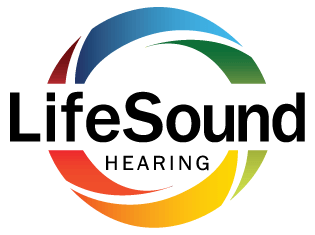Hearing Aid Devices in Bensalem and King of Prussia
Hearing aids can make a life-changing difference by helping you follow conversations, enjoy social gatherings, and regain confidence in your hearing. At Lifesound Hearing, our experienced audiologists in King of Prussia and Bensalem offer a wide selection of hearing aid styles and technology options to meet your unique hearing needs and budget.
After a comprehensive hearing test, we’ll discuss which types of hearing aids may work best for you and explain how each option can improve your ability to hear clearly in different environments.
How Hearing Aids Help
Modern hearing aids take in sounds around you, amplify them, and deliver clearer sound directly to your ear. This makes it easier to understand speech and follow conversations, even in noisy settings.
Because hearing aids are small, comfortable, and discreet, you can wear them throughout the day without discomfort. Improved clarity also reduces listening fatigue and stress—helping you focus on enjoying the moments that matter most.
Different Styles of Hearing Aids: Finding the Best Fit for You
There’s no single solution for everyone with hearing loss. Each hearing aid style is designed for different levels of hearing ability, comfort preferences, and lifestyle needs. Our team at Lifesound Hearing will help you find the best fit from a wide range of modern, discreet devices.
Behind-the-Ear (BTE)
In-the-Ear (ITE)
In-the-Canal (ITC)
Receiver-in-Canal (RIC)
Middle Ear Implants
Extended-Wear Hearing Aids
Digital vs. Analog Hearing Aids
While analog hearing aids simply make all sounds louder, digital hearing aids take sound clarity to a new level. Digital models convert sound into digital signals, allowing them to separate speech from background noise and automatically adjust volume for different environments.
This means you can hear voices more clearly without being distracted by unwanted sounds.
Key Benefits of Digital Hearing Aids
Boost speech clarity while reducing background noise.
Eliminate high-pitched feedback or whistling.
Automatically adjust volume based on your surroundings.
Our audiologists in King of Prussia and Bensalem can help you decide whether digital hearing aids are right for your hearing needs and lifestyle.
Bluetooth Hearing Aids
Many modern hearing aids come with Bluetooth so you can link them to phones, tablets, and music players. This lets you stream music or answer calls without draining the battery too fast. Some other devices need a small add-on (called a streamer) to connect through Bluetooth.
Wireless Hearing Aids
Not all hearing aids that appear “wireless” actually offer full connectivity features. True wireless hearing aids not only communicate with your electronic devices, but also synchronize both hearing aids for improved sound balance and clarity.
Advantages of Wireless Hearing Aids
Send sound to both ears at once for a more natural experience.
Adjust volume in both aids with one simple control.
Stream audio from your TV, phone, or music player directly to your ears.
Customize settings for different listening environments, such as restaurants or theaters.
Wireless technology can make your hearing loss treatment more seamless, letting you enjoy better hearing with less effort.
How Wireless Hearing Aids Can Help
- Send voices and music to both ears at once, even if only one aid picks up the sound.
- Let you change the volume in both aids by pushing a single button.
- Quiet background noise so you can focus on what matters.
- Create custom settings for different places, like busy restaurants or malls.
- Stream TV shows, music, and internet audio straight to your ears without static.
- Adjust your TV volume without making it louder for anyone else.
- Make speech or music clearer.
- Let you use a remote control to switch between devices or change volume easily.
Rechargeable Hearing Aids
Next Steps
If you think hearing aids might help you, contact us to set up a hearing test. We’ll figure out your level of hearing loss and suggest the best style. After you choose the device you like, we’ll fit and program it, then teach you how to care for it. With the right hearing aids, you’ll be able to enjoy conversations, special moments, and everyday sounds more than ever before.
If you have questions, we have answers. Visit our Hearing Aid FAQs or contact us today.
